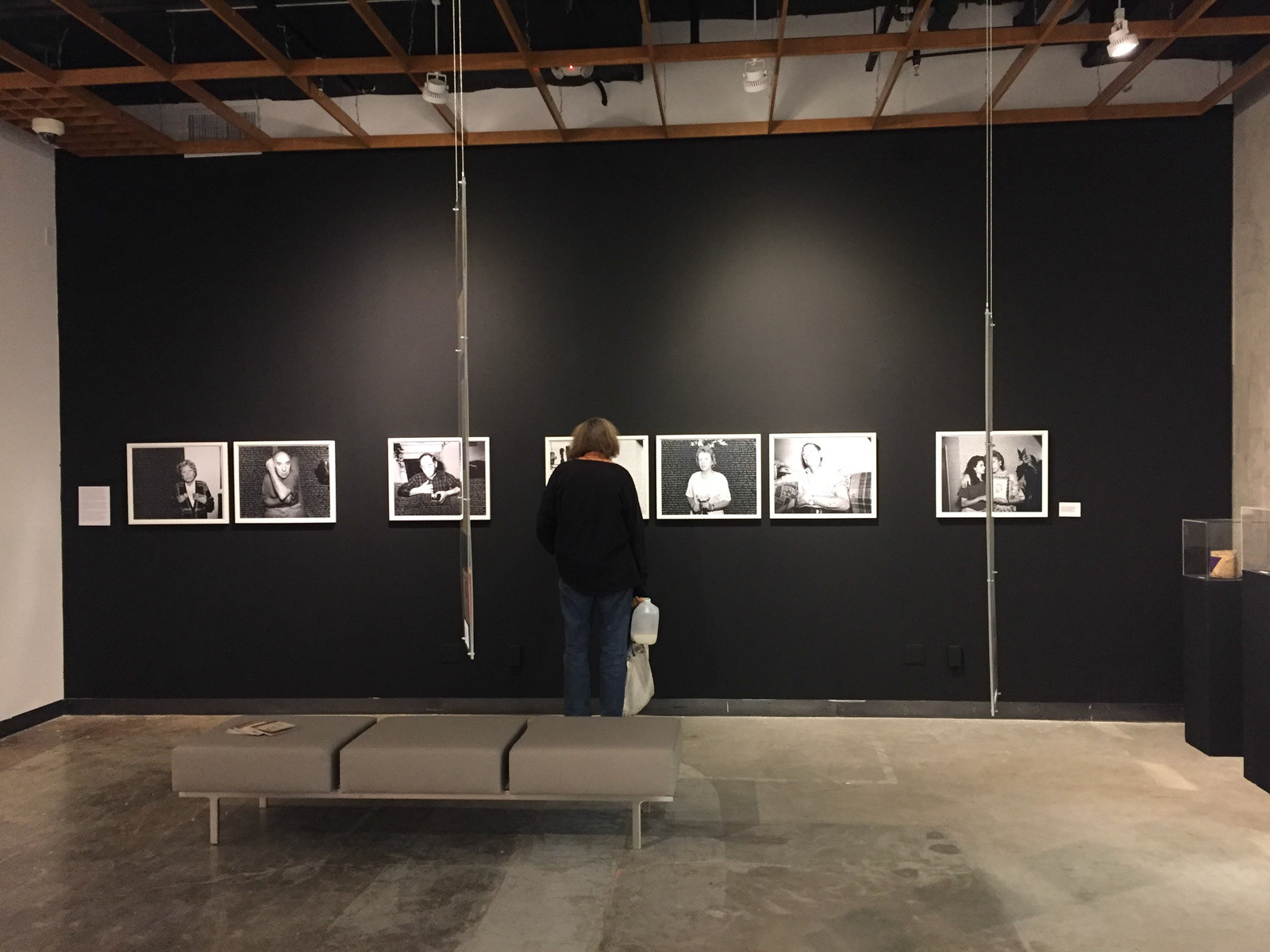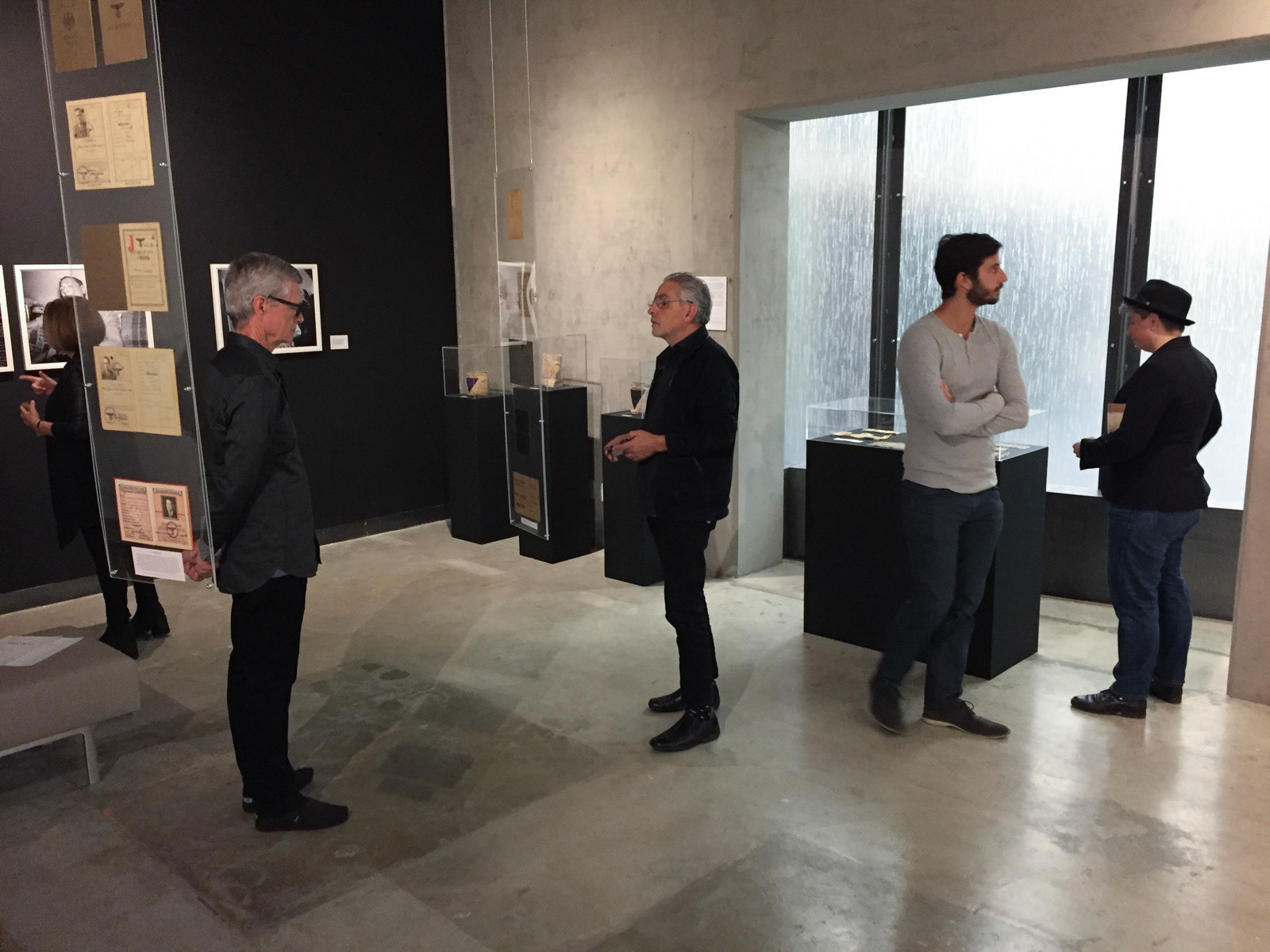ReflectSpace Gallery
Downtown Central Library, Glendale
Dec 8, 2017 – Jan 17, 2018
Downtown Central Library, Glendale
Dec 8, 2017 – Jan 17, 2018
Artists
Dina Gottliebova Babbitt
Jim Friedman
Dina Gottliebova Babbitt
Jim Friedman
Erich Lichtblau-Lesky
Jeffrey Wolin
Archives
Los Angeles Museum of the Holocaust
Archives
Los Angeles Museum of the Holocaust
US Holocaust Memorial Museum
Co-curated by Eric Hall, Ara & Anahid Oshagan






ReflectSpace at Downtown Central Library in Glendale and the Los Angeles Museum of the Holocaust (LAMOTH) present “i am: Narratives of the Holocaust” an exhibition that brings together contemporary photography and rare artifacts/archives to examine various narratives of survival and identity created during the Holocaust and later. “i am” explores the core genocidal process of de-humanization and presents works from an inclusive and deeply personal perspective that affirm as well as disrupt traditional narratives of inheritance of historical violence.
“i am: Narratives of the Holocaust” runs from December 8, 2017 to January 17, 2018. The opening is Saturday, December 9th from 6 - 8 pm and will include an artist talk with Jeffrey Wolin at 7 pm. “i am” is co-curated by Ara and Anahid Oshagan of ReflectSpace and Eric Hall of LAMOTH.
“ i am” explores notions of identity and identification—person, place, time—and de-humanization during the Holocaust through a rare collection of artifacts from the LAMOTH. Identification armbands, numbers and symbols worn by prisoners of concentration camps and identity cards (often stamped with a letter for further classification) from a multitude of European countries are on display. Their owners range from a broad cross-section of groups persecuted by the Nazis: Jews, Jehovah’s Witnesses, Romani gypsies, political prisoners, habitual offenders, and members of the LGBTQ community.
An extraordinary instance of identification—through portraiture—was made by 21-year old artist Dina Gottliebova Babbitt. In 1944, while imprisoned at Auschwitz, she was recruited by the infamous Nazi doctor Josef Mengele to draw portraits of Romani inmates subject to horrific medical experimentations. “i am” presents four of her Romani watercolors that are simultaneously portraitures of identification and an intervention to enable her own survival. The Auschwitz museum retains her original work, we present the only available reproductions donated to the LAMOTH by the artist. The subdued color and unsettling beauty of these portraits run counter to all intuitions of that dark time.
Similarly against-the-grain and disruptive of the traditional narratives of sites of trauma are contemporary artist James Friedman’s vivid color photographs of Holocaust sites from his series “12 Nazi Concentration Camps.” Friedman rejects the tendency to picture these sites of depravity, torture and murder in “timeless” and somber black and white; instead his work explodes with color and documents the often surprising juxtapositions of the mundane activities at these sites in the 1980s with the historical memory of the horrors that occurred there. Including himself in many of his images, Friedman’s work places the second and third generation witness at the very center of the spaces occupied by the Holocaust and forces viewers to reconsider their perceptions of these sites of unimaginable violence.
Photographic artist Jeffrey Wolin is also a post-Holocaust witness. Sourced from a deeply personal space, his series “Written in Memory” merges photography with testimony and creates a different kind of identity of the survivor. He makes portraits of Holocaust survivors and writes their testimony directly onto the photographs. Here the visual and textual narratives are intractably intertwined and present a world of witnessing where the present-day context is wiped out and the narrative/testimony takes its place. The work alludes to the core identity of survivors: their inability to imagine themselves outside their survival.
Rounding out “i am” in ReflectSpace is an impossible remnant from the Holocaust. Selma and Chaim met at Sobibor camp. They did not speak each other’s language but fell in love. During the Sobibor camp uprising, they somehow found each other and escaped. They went into hiding for two years and during that time, they wrote a diary. Of the 160,000 prisoners at Sobibor, only a few hundred survived and none but Selma and Chaim kept a diary. Their diary, every single page, in its actual size and in totality, is reproduced and presented in “i am” as an installation: a statement of “presence” and a narrative of survival. Selma and Chaim’s diary digital scans are courtesy of the United States Holocaust Memorial Museum.
Expanding on the themes of “i am”, original artwork from Erich Lichtblau-Lesky’s They Shall be Counted, a pictorial diary of ghetto life, will be displayed in the PassageWay, lent by LAMOTH. Lichtbau-Lesky was deported to Theresiendstadt Ghetto where he made graphic pictorial narratives depicting ghetto life. He hid the diary’s sketches, watercolors and graphics in the floorboards in his barracks and was able to retrieve them after liberation. Later, he re-worked them into larger images. His ironic and deeply-felt pre and post pictorial narratives are displayed alongside each other in the PassageWay gallery. Also available will be Lichtblau-Lesky’s book, They Shall be Counted, published by LAMOTH.
